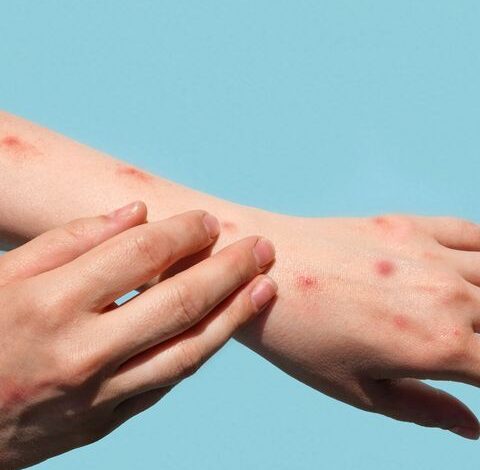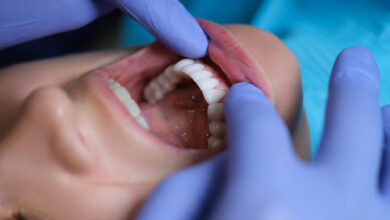Treating Blisterata: Exploring Effective Therapies and Medications

Are painful blisters keeping you from enjoying the activities you love? Whether they’re caused by friction, burns, or allergies, dealing with blisters can be a real pain! But fear not – in this blog post, we have gathered a treasure trove of information on treating blisterata.
From tried-and-true home remedies to cutting-edge therapies and medications, we’ve got all the tips and tricks you need to banish those pesky blisters for good. So sit back, relax, and get ready to explore the world of effective blister treatments that will have you back on your feet in no time!
Introduction to Blisterata
Blisterata is a condition that affects the skin and mucous membranes. It is characterized by the formation of blisters and/or ulcers. The most common symptom of blisterata is the presence of blisters on the skin or mucous membranes. These blisters may be filled with clear fluid, pus, or blood. In some cases, the blisters may break open and crust over.
Blisterata can affect any area of the skin or mucous membranes. However, it most commonly affects the hands, feet, and face. The condition can be painful and debilitating. In severe cases, it can lead to secondary infections and scarring.
There is no cure for blisterata. However, there are treatments available that can help manage symptoms and improve quality of life.
Causes of Blisterata
There are many potential causes of Blisterata, a condition characterized by the formation of blisters on the skin. Possible causes include viral infections, allergic reactions, and certain autoimmune disorders. Treatment for Blisterata will vary depending on the underlying cause.
Viral infections are a common cause of Blisterata. These can include both common viruses, such as the herpes simplex virus, and more rare viruses, such as the varicella-zoster virus. Allergic reactions can also lead to Blisterata. Common triggers include certain food allergens, insect bites or stings, and medications. Certain autoimmune disorders can cause Blisterata. Examples include pemphigus vulgaris and bullous pemphigoid.
The best way to treat Blisterata is to identify and address the underlying cause. In some cases, this may require medication or other medical intervention. In other cases, simple lifestyle changes may be all that is needed to keep blisters at bay.
Symptoms of Blisterata
There are a few telltale signs that you may have Blisterata. These symptoms include:
- Fever
- Aches and pains
- feeling tired all the time
- Loss of appetite
- Headache
- Nausea or vomiting
If you experience any of these symptoms, it’s important to see a doctor right away as they could be indicative of a more serious condition.
Diagnosis and Treatment Options
There are a variety of ways to treat blisterata, and the most effective approach depends on the severity of the condition. For mild cases, over-the-counter medications and home remedies may be enough to provide relief. More severe cases may require prescription medications or other medical interventions.
The first step in treating blisterata is to get a diagnosis from a medical professional. They will ask about your symptoms and medical history and may order tests to rule out other conditions. Once they have made a diagnosis, they will develop a treatment plan based on the severity of your condition.
Mild cases of blisterata can often be treated with over-the-counter medications such as antihistamines or corticosteroids. These can help to reduce swelling and itchiness. You can also try using cool compresses or taking oatmeal baths to soothe the skin.
If your symptoms are more severe, you may need prescription medications. These can include oral or topical corticosteroids, immunosuppressants, or biologic agents. In some cases, surgery may be necessary to remove blisters that do not respond to other treatments.
No matter what treatment approach you take, it is important to protect your skin from further injury. This includes avoiding hot showers or baths, using gentle soaps, and wearing loose-fitting clothing. If you have any open wounds, be sure to keep them clean and covered to prevent infection.
Home Remedies for Blisterata
There are a few home remedies that can help with blisterata. First, try soaking the affected area in warm water for 10-15 minutes. This will help to soften the skin and make the blisters less likely to rupture. You can also apply a topical antibiotic ointment to the affected area to help prevent infection.
If the blisters do rupture, be sure to clean the area well and apply a bandage. Try taking an over-the-counter pain reliever such as ibuprofen to help with any pain or discomfort.
Medications for Treating Blisterata
Blisterata is a condition characterized by the formation of blisters on the skin. While there is no cure for blisterata, there are several effective treatments and medications available that can help to improve the symptoms and quality of life for those affected by the condition.
Topical corticosteroids are often prescribed to treat blisterata, as they can help to reduce inflammation and itching. Antihistamines may also be recommended to help relieve itching, while oral or injected corticosteroids may be necessary in more severe cases. In some cases, immunosuppressive drugs may be required to control the body’s immune response.
If you suffer from blisterata, it is important to speak with your doctor about the best treatment options for you. With proper treatment, most people with blisterata can enjoy a good quality of life.
Stress Management Strategies
There are a variety of stress management strategies that can be effective for treating blisterata. Some common stress management techniques include relaxation techniques such as yoga and meditation, deep breathing exercises, and progressive muscle relaxation. Other helpful stress management strategies include exercise, journaling, and spending time in nature.
It is important to find what works best for you and to find a way to incorporate stress management into your daily routine. If you are unsure where to start, there are many resources available online and in books. You can also talk to your doctor or a mental health professional about effective stress management strategies.
Prevention Tips for Avoiding Blisterata
1. Avoid hot, humid conditions if possible. If you must be in a hot or humid environment, take frequent breaks in a cool, air-conditioned area.
2. Wear loose-fitting, breathable clothing. Cotton is a good fabric choice. Avoid wearing tight shoes or socks.
3. Use powder or antiperspirant on your feet to help keep them dry and prevent sweating.
4. Inspect your feet regularly for any areas of irritation that could lead to blisters. If you find an area of concern, cover it with a bandage or moleskin before it gets worse.
5. When engaging in activities that could lead to blisters (such as hiking or running), make sure to wear appropriate footwear and socks. Consider using blister-resistant products such as Second Skin or Compeed Blister Plasters on vulnerable areas of your feet before starting out.
Conclusion
Blisterata is an extremely uncomfortable and painful condition that can have a significant impact on quality of life. Fortunately, there are many effective treatments and medications available to help sufferers manage their symptoms and improve their overall well-being.
While the best course of treatment will depend on the individual patient’s needs, it is important to seek professional medical advice in order to ensure that the most suitable therapy or medication is prescribed. By taking prompt action, those suffering from blisterata can look forward to living a more comfortable and enjoyable life.




